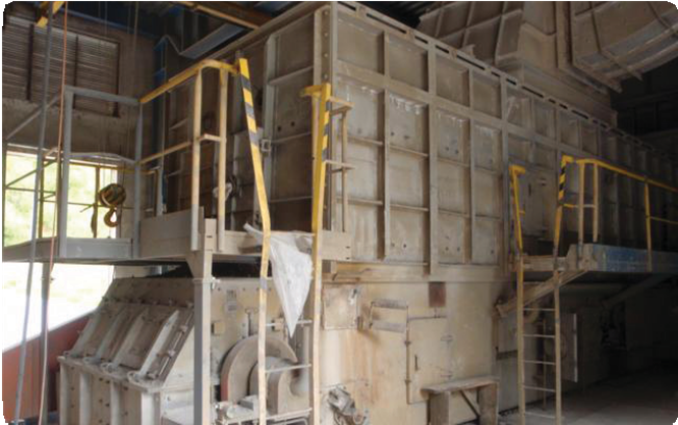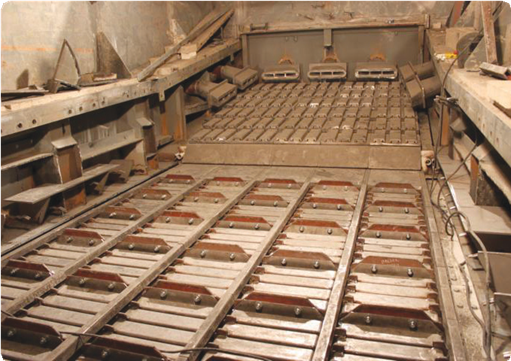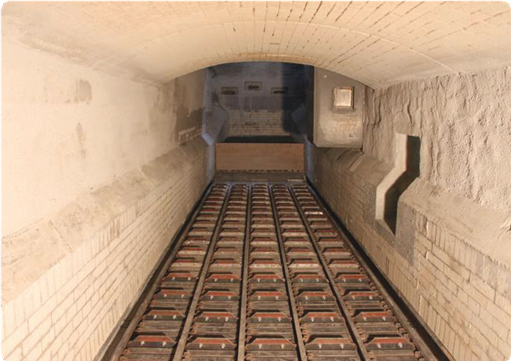Computational tools
Related Videos
FONS DELTA COOLER
With the cost of energy steadily increasing, cement plants can reduce fuel bills by installing appropriate technology in various areas of their operations. One such area is the clinker cooler as Fons Technology International discusses in this report.

Figure 1: existing cooler at Horne Srnie (Asamer Group) slovakia
As fuel prices are continuously increasing, energy consumption and efficiency are equally important to cement producers.Every cement plant has its unique combination of factors that contribute to its operational efficiency: the initial technology employed, latest fuel prices, possibilities of burning alternative fuels and longterm availability, energy costs, company strategies etc.
The clinker cooler is the most important piece of equipment in determining the energy consumption for the entire kiln line, as it delivers recuperated heat, from the hot clinker leaving the kiln, back to the production process.
Existing cooler types
Many cement plants are equipped with older coolers such as satellite coolers and reciprocating grate types which have low efficiency compared to modern coolers. Therefore, a cooler replacement would seem the obvious solution in plants where old coolers still exist but previously this had not been a viable option due to the required shutdown period for a cooler replacement and the total investment needed. However, it is surprising what is now possible and what can be achieved. Clinker coolers using shuttle floor motion patterns are offered by most well-known suppliers in different guises. Mr. Fons was the first to form a patent application in 1999 making Fons Technology International (FTI) the “first mover” in this breaking technology, which FTI believes will continue to be the cooler transport principle of the future. Over the past five years, FTI is established as a leading brand and the Fons Delta Cooler (FDC) is now in operation in more than 60 cement plants in China.
FDC technology
The FDC’s groundbreaking bearing system allows a perfect sealing between lanes, ensuring stabilised heat recuperation which is not being reduced due to uncontrolled air flow passing between the lanes. All air has to go through the grate plates but before arriving, passes through the Stepped Air Flow Function (STAFF). This is a selfadjusting air flow regulator which only adds air flow resistance if needed, and only as much as required. During normal operation the resistance is minimal and consequently, entire compartment pressure is low. In other words, air flow to each grate plate remains constant, disregarding the air flow resistance in the above clinker layer. This results in lower energy consumption to the fans and, simultaneously, improved air flow distribution plus a resultant increase in heat recuperation. In short, a win-win-win situation.
FDC at Horne Srnie

Figure 2: units are installed with fixed inlet

Figure 3: the cooler is ready for operation

Figure 4: a view the crusher end – the Fons Delta Cooler can use hammer crusher or roller crusher

Figure 5: moveable lanes with sealing

Figure 6: Stepped Air Flow Function (STAFF)
The Horne Srnie cement plant (Asamer Group) in Slovakia initially planned to implement only a clinker cooler fixed inlet to improve heat recuperation. This would ensure that the modification work could be carried out during the annual maintenance shutdown period. The timing was perfect, as Horne Srnie management were able to visit an ongoing FTI cooler installation at Askale Cement in Turkey (see ICR September 2011). This enabled them to witness first-hand an effective, total cooler installation in an existing casing carried out in a record-breaking 15 days from flame-off to flame-on. Based upon FDC feasibility studies and having witnessed the effectiveness of the installation, Horne Srnie management decided to have its complete cooler internals removed and replaced with a FDC. The heavy maintenance costs for the entire cooler would be reduced, as grate plates are no longer wear parts in the moveable section of the cooler. Total clinker cooler upgrade encompassed:
- ISO kinetic fixed inlet
- moveable grate lanes
- hydraulic drive unit with control panel
- new cooling fans
- engineering, erection andcommissioning
In addition, the following performance figures were specified:
- kiln line capacity 1200tpd
- a reduction of heat consumptionby 15 kCal/kg clinker, whereexisting heat consumption was 850kCal/kg clinker using of alternative fuels
- temperature of tertiary air duct (TAD) will be increased from the existing 710 ºC to 820ºC (seven-day average)
- 3,5 kWh /t clinker electricity consumption for new fans
- 0,3 kWh/t clinker electricity consumption for cooler hydraulic drive
- 0,5 kWh/t clinker electricity consumption for hammer crusher
- temperature of exhaust gases will decrease from the existing 320 ºC to 300 ºC.
Following an effective erection plan and successful execution, and with support from the plant and FTI’s regional agent ALIACEM, all performance guarantees were attained (see Table 1) cooler at FTI’s workshops and testing of hydraulic systems, so that only finetuning is left for site erection.
Table 1: performance test data
|
Performance indicators |
Existing plant data |
Contract data |
Performance test data |
|
Kiln line capacity (tpd) |
1200 |
1200 |
1209 |
|
Heat consumption (kcal/kg clinker) |
850 |
835 |
835,7 |
|
TAD temperature (ºC) |
710 |
820 |
911,60 |
|
Electricity consumption of fans + drives + crusher (kwh/t clinker) Exhaust gas temperature (ºC) |
7,12 (7 fans) 320 |
4,3 (4 fans) 300 |
4,23 (4 fans) 296,8 |
|
Clinker outlet temperature above ambient (ºC) |
105 |
70 |
53 |
|
Alternative fuels TSR (%) |
38 |
38 |
38
|
Conclusion
With the Fons Delta Cooler, many clinker production lines could obtain similar improvements such as those achieved at the Horne Srnie plant for their processes and mechanical maintenance. High cooler efficiency, secondary and tertiary air temperature allow fast increases in the total alternative fuel substitution ratio.
Articles
- THE FIRST PROJECT OF FONS TECHNOLOGY INTERNATIONAL IN STATIC GRATE AND FANS OF CLINKER COOLER UPGRATING IN VIETNAM (05.10.2018)
- INTERCEM Asia 2016 (03.08.2016)
- Providing European standard Cooler with competitive price (23.07.2015)
- Training program of energy audit in the cement industry - Training for ECC (Jan 2013) (04.06.2015)
- Heat balancing, No.2 and No. 3 rolling kilns line optimizing (7/2014) and (11/2013) - Bỉm Sơn cement (04.06.2015)












